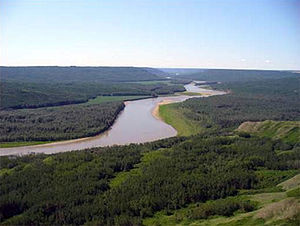Burgunlibre
| This article is a stub. You can help IxWiki by expanding it. |
 A wilded plot in Laclionia | |
| Years active | 1997-2025 |
|---|---|
| Country | |
As part of the Burgunlibre movement of the 1990s, academics, functionaries, and practitioners from the fields of geology, land management, herbology, horticulture, agriculture, the Royal Public Health Commission, and the Ministry of the Interior gathered to find ways to better utilize the undeveloped land across the Burgoignesc thalattocracy to support a carbon independent Burgundie. Among many of the recommendations was the concept of "wilding" or letting space return to its natural state. This facilitated not only the conservation of flora and fauna native to Burgundie, but also, when controlled, helped to promote healthier air (reducing the need for industrialized air scrubbing techniques), push back invasive species, and give space to the frontier culture of Burgundie real. Millions of acres across the thalattocracy, were identified as part of the program and redistributed to the Royal Estate under the Trust of Wildland Management.
Initiation
As part of the transition towards an increasingly mechanical and automated supply chain, farms across Burgundie, particularly on the Ile Burgundie and Notrestran, had been failing. This vicious cycle led to a debtor's class which society was loathe to leave neglected. In order to address this issue and to seek the vast lands needed for the wilding project, farmers were bought out in collective continuous parcels totaling over 1300 acres (5sq km or 2 sq mi). This approach was very much appreciated by the farmers who needed the assistance but was cumbersome to those still hanging on to a profit. In order to meet the 1300 continuous acres, sometimes failing farmers would have come to an agreement with their more successful neighbors to buy an easement to connect failing properties. This led some of the government purchased parcels to be connected by narrow strips only a meter or so wide.
In Faramount, this was achieved by handing much of the nutrient-stripped industrial farm and ranch land over to the Royal Trust. This unused land was rendered infertile by the 1970s and left barren.
In Equatorial Ostiecia and the BORA territories, this has taken less of an effect as much of the farms remain active and viable. The lands handed over to or purchased by the trust came from unused areas owned by the royal estate of Equatorial Ostiecia or the Burgoignesc Foreign Legion.
Wilding
Between 1997-2025 the Royal Trust of Wildland Management took ownership of over 27,520,000 acres (111,369 sq km or 43,000 sq mi) of land for the purposing of wilding. In 2025 a moratorium was placed on new land purchases. A ranger shortage was experienced and various units of the Army of Burgundie were brought in to maintain the lands. The assigned units were trained by the Raulie Bushrangers in the art of the Chasseurs Forestiers.